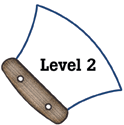
Alaska Science
Key Element A14b
A student who meets the content standard should understand that the living environment consists of individuals, populations, and communities (Interdependence).
 |
Alaska Science A student who meets the content standard should understand that the living environment consists of individuals, populations, and communities (Interdependence). |
|
Performance Standard Level 2, Ages 8–10
|
|
|
|
Sample Assessment Ideas
|
|
|
Expanded Sample Assessment Idea
|
|
Procedure Students will:
Reflection and Revision
|
Levels of Performance |
||
|
Stage 4 |
Student work is complete, shows evidence of logical reasoning and knowledge related to animal life cycles. The report is detailed and includes information related to: the animal’s social behavior and behavioral changes which occur throughout the animal’s life cycle; how the animal’s behaviors affects other individuals of both genders and the community as a whole; and advantages and dangers of both solitary living and group-living. | ||
|
Stage 3
|
Student work shows evidence of knowledge related to animal life cycles as well as logical reasoning but may contain minor errors or omissions. The report includes information related to: the animal’s social behavior, and at least one behavioral change that occurs during the animal’s life cycle; how the animal’s behaviors affect other individuals of both genders and the community as a whole; advantages and dangers of solitary living or group living. | ||
|
Stage 2
|
Student work is incomplete, shows limited evidence of knowledge related to animal life cycles and may contain errors of science fact and reasoning. The report may include information related to: the animal’s social behavior; how the animal’s behaviors affect other individuals or the community as a whole; or advantages and dangers of solitary living vs. group living. | ||
|
Stage 1
|
Student work is largely incomplete, shows little evidence of knowledge related to animal life cycles, and may contain major misconceptions. | ||
Standards Cross-References
|
||
|
National Science Education Standards A population consists of all individuals of a species that occur together at a given place and time. All populations living together and the physical factors with which they interact compose an ecosystem. (Page 157) Populations of organisms can be categorized by the function they serve in an ecosystem. Plants and some microorganisms are producers—they make their own food. All animals, including humans, are consumers, which obtain food by eating other organisms. Decomposers, primarily bacteria and fungi, are consumers that use waste materials and dead organisms for food. Food webs identify the relationships among producers, consumers, and decomposers in an ecosystem. (Page 157) |
Benchmarks A great variety of kinds of living things can be sorted into groups in many ways using various features to decide which things belong to which group. (Page 103) Organisms interact with one another in various ways besides providing food. Many plants depend on animals for carrying their pollen to other plants or for dispersing their seeds. (Page 116) |
|
Table of Contents | Return to Alaska Native Knowledge Network